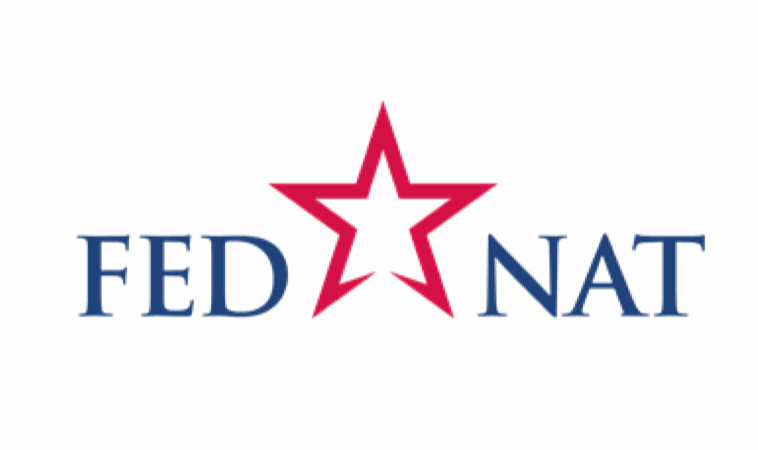FedNat’s strategic shift proceeding as planned; cat reinsurance spend down in Q4

Executives at U.S. primary insurance carrier group, FedNat Holding Company, have reported that the company continues to see positive trends in its Florida homeowners business as the book shrinks and rates increase, while the firm’s catastrophe reinsurance spend fell by $10 million in the fourth quarter of 2021.
After looking for growth and diversification outside of Florida in order to reduce volatility, stabilise earnings and expand the business, FedNat announced in November 2021 intentions to revert to Florida following elevated catastrophe losses outside of the state.
At this time, management noted that rate increases had made the Florida homeowners property insurance market attractive again, while legislation targeting the assignment of benefits (AOB) issue also suggested a less volatile marketplace.
In its Q4 and full-year 2021 results announcement, FedNat’s Chief Executive Officer (CEO), Michael Braun, provided an update on the carrier’s recent actions as it continues the reversal of its expansion plans, which includes the exit of all non-Florida markets.
“The strategic shift that FedNat announced in November to refocus on the Florida homeowners market is proceeding as planned with the orderly runoff of Maison’s insurance operations and the non-renewal and transfer of FNIC’s non-Florida business,” he said.
“We expect the runoff of Maison’s business to be substantially completed by the end of 2022 and the non-renewal and transfer of FNIC’s non-Florida business to be substantially finished by the second quarter of 2023. Upon completion of the transition, we expect FedNat to be a financially stronger company, with less volatility, that will be rightsized to our current capital and surplus position, with approximately $450 million of in-force premium exclusively in Florida and approximately $113 million in surplus. The benefits of the transition have already begun to materialize and the pace of runoff will accelerate further during the second quarter of 2022,” he added.
The CEO goes on to explain that FedNat is still seeing positive trends in its Florida homeowners business, driven by its efforts to reduce the size of the book over the past five years and also the impact of higher rates to more accurately reflect the elevated costs of doing business in the state.
“Our Florida book has declined by over 40% from 272,000 policies-in-force in 2017 to 160,000 at the end of 2021. In that same time period, we have increased FNIC’s rates in Florida by approximately 70%, cumulatively, restoring rate adequacy and resulting in improved attritional loss ratios in FNIC’s Florida book in the fourth quarter. With approved and continued pending rate increases in Florida rolling into our book, we continue to expect FedNat to achieve ex-catastrophe earnings improvement in 2022,” said Braun.
In the fourth quarter of 2021, FedNat’s Florida homeowners in-force policies declined by 22.7% to 160,000. At the same time, the company shrank its non-Florida homeowners in-force policies to roughly 120,000, reflecting a reduction of 22.1% as it exits non-Florida markets, including non-renewal of FedNat Insurance Company’s non-Florida business and the run-off of Maison Insurance Company.
All in all, gross written premiums (GWP) decreased by 6.6% to $157.3 million in Q4 2021, driven by the refocus on Florida and the run-off of non-Florida business. However, in Florida, GWP rose by 2.9% despite the reduction in in-force policies, which FedNat says indicates “greater prospective rate adequacy in the Florida book of business.”
In line with the planned refocus, gross premiums earned fell by almost 5% to $9 million in Q4 2021 when compared with the prior year quarter.
Ceded premiums, however, remained flat year-on-year at $118.8 million. FedNat explains that during the quarter, there was approximately $10 million of higher quota share ceded premium, of which $9 million relates to new and incremental quota-share treaties for FNIC’s Florida book, and $1 million related to the 80% quota share reinsurance treaty for the insurer’s non-Florida book.
Additionally, FedNat has reported that its catastrophe reinsurance spend fell by roughly $10 million in the period, driven by the purchase of “supplemental coverage in 2020 to backfill gaps in coverage stemming from the non-cascading portion of our reinsurance tower, following the multiple retention catastrophe events that occurred in the second half of 2020.”
As we wrote last year, FedNat further expanded its reinsurance arrangements at the end of 2020. But while these agreements saw its cat reinsurance costs decline in Q4, the hardening reinsurance market environment resulted in higher rate-on-line prices for its 2021/2022 catastrophe excess of loss program, which somewhat offset the benefit.
For the final quarter of last year, FedNat has fallen to a net loss of $8.6 million, which is actually a year-on-year improvement on the $38.1 million loss seen in Q4 2020.
The result includes loss and loss adjustment expenses of $30.9 million, which is down by more than 39% year-on-year. Net losses during the fourth quarter were driven by $8.1 million of net catastrophe losses, net of reinsurance and claims handling fee income, as well as prior accident quarter reserve strengthening of $7.6 million, somewhat offset by a $4.4 million benefit from lower reinstatement premiums.
While FedNat’s Q4 loss narrowed, the company’s full year 2021 loss widened to $103.1 million compared with $78.2 million in 2020. FedNat attributes the larger loss to higher reinsurance costs and the lack of any income tax benefits in 2021.
Although the firm’s gross and net loss ratios increased for the year, it’s clearly benefitting from its use of reinsurance protection. And, as the strategic actions continue to filter through and higher rates in Florida persist, it will be interesting to see how FedNat’s combined ratio trends in 2022 after increasing to 184.6% in 2021.






